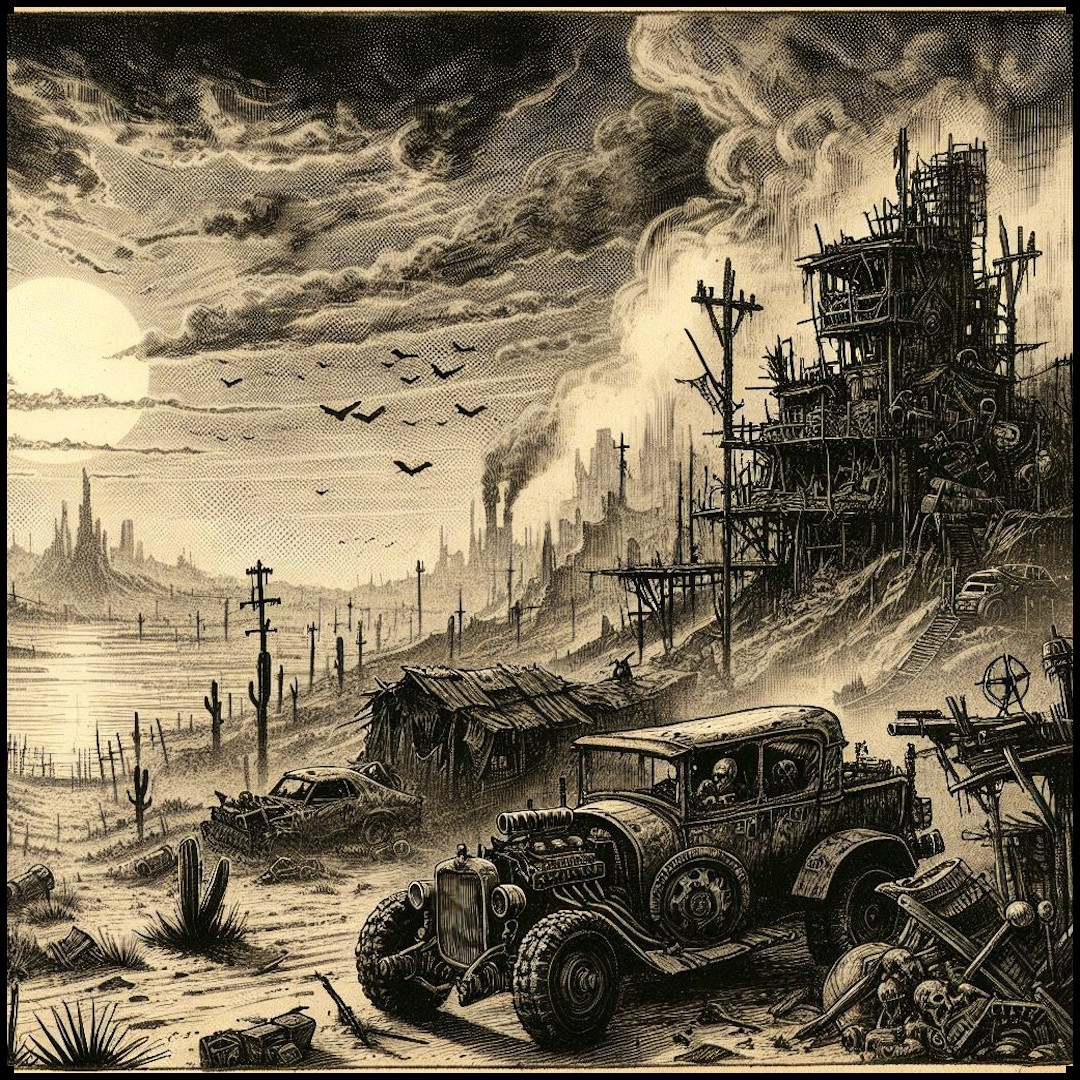
n the expansive world of fantasy cartography, few themes evoke as much intrigue and immersion as the post-apocalyptic landscapes inspired by Mad Max. These maps transport us into realms where civilization has crumbled, leaving behind a brutal and unforgiving terrain dotted with outposts, mutated creatures, and the skeletal remains of once-thriving cities. At the heart of crafting these immersive landscapes lies the Post-Apocalyptic Mad Max inspired Vintage assets COMPLETE MEGAPACK, a treasure trove of digital assets meticulously designed to bring these dystopian visions to life.
BUY AND DOWNLOAD The Post-Apocalyptic Mad Max inspired Vintage assets COMPLETE MEGAPACK here :
Historical Roots and Cultural Significance
The aesthetic of post-apocalyptic fantasy maps draws inspiration from a rich tapestry of historical and cultural influences. Ancient maps, such as those from the Age of Exploration, often blended factual geography with imaginative elements like sea monsters and mythical lands. These embellishments served not only to fill gaps in knowledge but also to ignite the imagination of viewers. Similarly, modern interpretations of post-apocalyptic maps borrow from these traditions, using visual cues to evoke a sense of wonder and trepidation about the unknown.
In literature and film, the Mad Max franchise stands as a seminal influence on the genre. Set in a world ravaged by societal collapse, these narratives depict a struggle for survival amidst lawlessness and resource scarcity. The visual language of rusted vehicles, makeshift fortifications, and barren landscapes permeates these maps, evoking a visceral response in viewers familiar with the genre’s tropes.
Utility in Storytelling and Gaming
Beyond their cultural and historical roots, post-apocalyptic fantasy maps serve crucial roles in storytelling and gaming. Game masters and authors utilize them to immerse players and readers in vividly imagined worlds where survival is paramount and every encounter holds potential danger or discovery. The maps act as visual aids that anchor narratives in tangible settings, enhancing the suspension of disbelief and fostering deeper engagement with the story’s themes.
For tabletop role-playing games (RPGs) and virtual environments alike, these maps provide essential visual context for quests, battles, and character interactions. They enable game designers and artists to construct detailed worlds that resonate with authenticity, offering players a canvas upon which to project their adventures and explore the consequences of societal collapse.
Decorative Appeal and Artistic Merit
From a decorative standpoint, post-apocalyptic fantasy maps are more than functional tools; they are striking works of art that blend antique aesthetics with modern storytelling sensibilities. Whether displayed as framed prints, featured in gaming supplements, or integrated into thematic decor, these maps captivate audiences with their evocative imagery and narrative depth. They appeal to collectors, enthusiasts, and artists alike, who appreciate their ability to transform spaces and spark conversations about the human condition in extreme circumstances.
Introducing the Megapack: Contents and Implications
The Post-Apocalyptic Mad Max inspired Vintage assets COMPLETE MEGAPACK encapsulates the essence of these themes with a comprehensive selection of assets:
- Post-Apocalyptic Towns and Cities: Haunting remnants of urban decay, where skyscrapers crumble and streets lie abandoned.
- Outposts and Settlements: Strategic bastions of survival, fortified against marauders and the elements.
- Factories and Smokestack Industries: Industrial relics, now silent and rusted, bearing witness to a bygone era of productivity.
- Vehicles and Modified Cars: Mad Max-style rigs, patched together with salvaged parts and armed for survival.
- Shard Mountains and Desert Dunes: Geological formations reshaped by cataclysmic events, dominating the horizon with their jagged silhouettes.
- Sinkholes, Rifts, and Pits: Tears in the earth’s fabric, revealing hidden depths and dangers beneath.
- Raiders, Militia, Scavengers, and Cannibals: Lawless factions that roam the wastelands, each with their own motives and methods.
- Robots and Mutant Creatures: Remnants of advanced technology and genetic experimentation, now thriving or malfunctioning in the aftermath.
- And More: The megapack also includes a plethora of additional assets such as abandoned stadiums, makeshift camps, eerie statues, and eerie slimes, each contributing to the rich tapestry of post-apocalyptic landscapes.
These assets not only enhance the visual appeal of post-apocalyptic maps but also deepen their narrative resonance, offering storytellers and creators a vast toolkit to construct worlds where the remnants of civilization collide with the raw forces of nature and human ingenuity.
Conclusion
In conclusion, post-apocalyptic fantasy maps inspired by Mad Max represent a convergence of historical, cultural, and artistic influences. They invite us to explore imagined worlds shaped by catastrophe, where the resilience of humanity is tested against the backdrop of desolation and decay. Whether used for storytelling, gaming, or decorative purposes, these maps transcend their utilitarian origins to become portals into speculative futures and cautionary tales about the fragility of civilization.
As you delve into the realms depicted within the Post-Apocalyptic Mad Max inspired Vintage assets COMPLETE MEGAPACK, remember that each asset tells a story of survival, adaptation, and the enduring spirit of exploration in the face of adversity. They challenge us to contemplate what lies beyond the edge of the map, where the ruins of the past converge with visions of an uncertain future.
Embrace the journey into these landscapes of imagination, where every detail—from abandoned cities to mutated creatures—paints a picture of resilience amidst ruin, inviting you to explore, create, and discover the narratives that lie buried beneath the dust of time.


